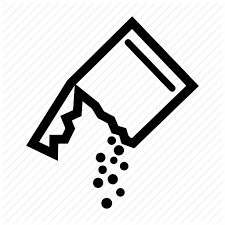Oral Rehydration Salt [Rice Based]
Indications
This saline is indicated in-
- Acute fluid and electrolyte loss conditions such as cholera, acute diarrhea & vomiting
- Dehydration
- Severely low concentrations of salts in the blood (severe electrolyte depletion)
Pharmacology
This saline contains essential electrolytes & carbohydrate (in the form of processed rice) which are vital for a dehydrating patient in conditions such as cholera, acute diarrhoea, vomiting & excessive sweating.
In the normal healthy intestine, there is a continuous exchange of water through the intestinal wall- up to 20 liters of water is secreted and very nearly as much is reabsorbed every 24 hours- this mechanism allows the absorption of soluble metabolites from digested food into the bloodstream.
In a state of diarrheal disease, the balance is upset and much more water is secreted than is reabsorbed causing a net loss to the body which can be as high as several liters a day. In addition to water, Chloride ion (CI-), extracellular sodium ion (Na+) & intracellular potassium ion (K+) are also lost. This saline is effectively replenishes the lost electrolytes in the body.
The pharmacokinetics and therapeutic values of the substances of this saline are as follows:
- Glucose (comes from rice) facilitates the absorption of sodium (and hence water) on a 1:1 molar basis in the small intestine
- Sodium and potassium are needed to replace the body losses of these essential ions during diarrhoea and vomiting
- Citrate corrects the acidosis that occurs as a result of diarrhoea and dehydration
Rice, a carbohydrate is converted to glucose through digestion. Glucose is then absorbed through intestinal wall with salt. Addition of rice (instead of pure glucose) to this formula reduces the osmolarity of the solution,thus preventing additional loss of fluid through stools.
Dosage And Administration
The dose depends on the severity of the dehydrating conditions of the patients. Recommended dose after each watery stool are as follows:
- 6 months to 2 years: 50 ml to 100 ml (10 to 20 Teaspoonfuls)
- 2 years to 9 years: 100 ml to 200 ml (20 to 40 teaspoonfuls)
- 10 years and above: 250 ml to 500 ml (1 to 2 glassfuls)
Administration
- Discard any unused reconstituted saline after 5 hours of preparation
- After preparing the saline further heating or boiling is not necessary
- Feeding-bottle should not be used
- Mix the solution with a clean spoon each time before administration
- Syringe without needle may be used to put a small amount of saline into babies' mouth
Interaction
There is no known drug interaction reported.
Contraindications
- Kidney failure resulting in diminished production of urine (oliguria)
- Kidney failure, preventing the production of urine (anuria)
- Obstruction of the stomach or intestines
- Reduced blood flow to vital internal organs (shock)
- Severe and continuous vomiting (intractable vomiting)
- Severe dehydration
- Severe diarrhea in infants.
Pregnancy And Lactation
Recommended in pregnancy & lactation, as there is no known harmful effects when this medicine is used.
Precautions And Warnings
Precautions should be taken in case of significant overdose, especially for the following patients-
- Children less than 1 year of age.
- Patients with imbalance of salt concentrations in the blood (electrolyte imbalance).
- Patients with severely decreased kidney and liver function.
Therapeutic Class
Oral electrolytes preparations.
Storage Conditions
Store in a cool & dry place, protected from light & moisture.
